Features of marble and granite kitchen countertops
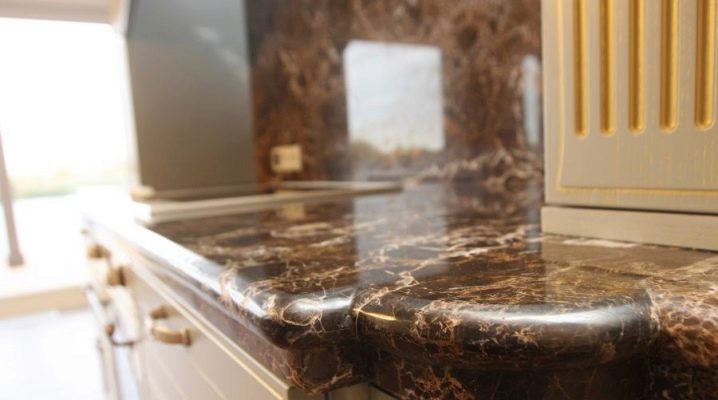
One of the most popular modern kitchen décor elements is stone countertops, which are a work surface. They look not only stylish and expensive, but also have high-quality functional features.

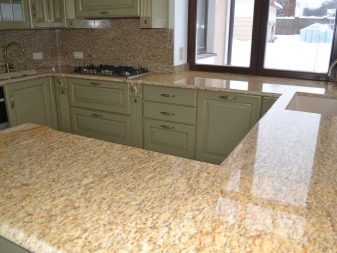
Types of stone
Recently, natural stone is often used for the manufacture of countertops. Stone countertops are made from so-called slabs.
Slab is a monolithic slab that was quarried. Most often, the thickness of such a plate varies from two to three centimeters, but sometimes it can be increased to 6 cm. For this, it is enough to glue an additional plate.
Basically, granite or marble is used to create countertops.
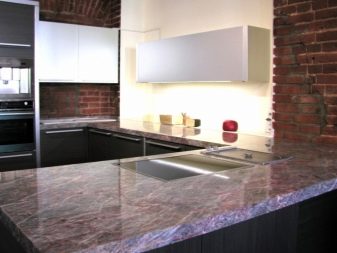
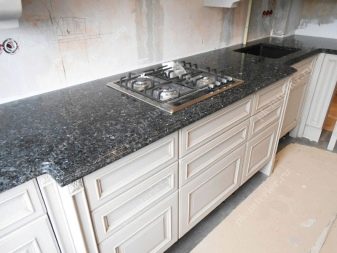
Granite is the most popular in the restaurant business, as it is often used for the production of these racks or professional kitchens.
This is due to the fact that granite is more resistant to high temperatures and does not deteriorate due to exposure to chemicals.
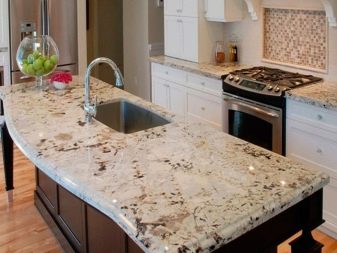

Marble is inferior in strength to granite, but has its own advantages. For example, when a stone is exposed to water, an alkaline environment is formed on its surface, in which bacteria cannot multiply.
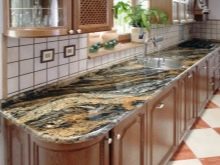
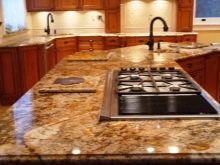
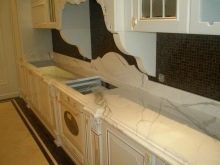
Granite products
Granite countertops in the kitchen are an expensive design element. It is not only strong and durable, but also perfect for almost any interior.
Granite has unique natural patterns: fine or coarse-grained, and the color of the stone can vary from light to black.
Due to its natural color, granite looks good in tandem with metal and wood interior elements.
As a rule, the thickness of a slab made of natural granite varies from 3 to 5 cm. The slab itself can be presented in different shapes - oval or round, square or asymmetric.
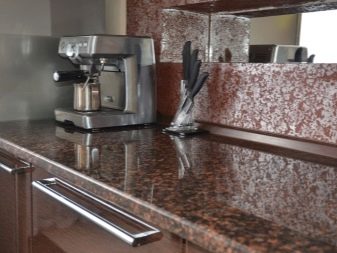
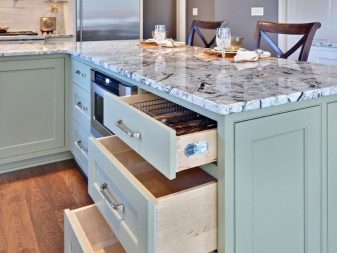
When choosing a countertop made of natural stone, many customers are afraid of its radioactivity. In particular, this applies to granite.
But a small level of radiation is present in every natural stone (and even concrete). The radiation is so low that there is no need to worry.
If you still care about this moment, then when choosing a material, you can dispel your doubts with the help of a Geiger counter.
Several types of granite countertops are offered to choose from, depending on taste preferences and interior style.
Countertops can be:
- glossy;
- matte - soft to the touch;
- tilted - retro style, when the table top is given an antique look;
- thermally treated - a stone slab is roughened by exposure to a high temperature gas jet.
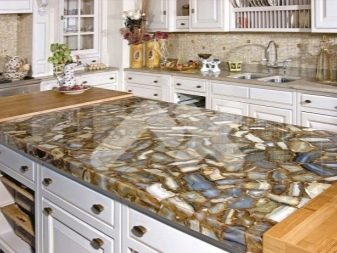
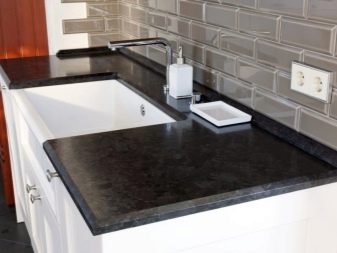
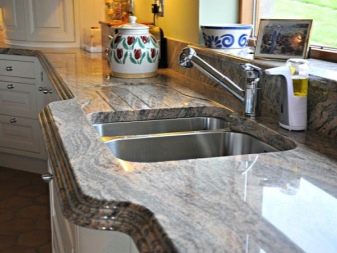
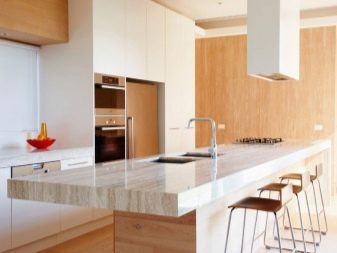
In addition, you can choose a work surface made of artificial stone or so-called cast granite. Such material is obtained by mixing granite chips with polymeric substances. It is difficult to distinguish it from natural stone, and this granite is even warmer to the touch.
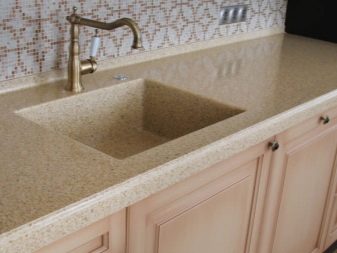
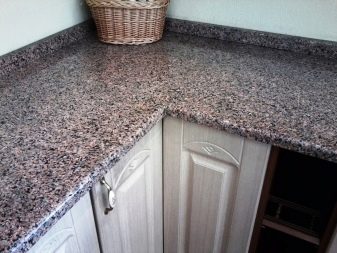
Advantages and disadvantages
The main advantage of granite is its high strength.
The material is difficult to scratch or damage, even if you cut food without a cutting board.
Granite perfectly withstands both high and low temperatures. You can safely put hot dishes on the granite work surface, the stone will not be damaged from this.
Several factors are noted among the disadvantages of granite countertops.
- Difficulty of replacement. If suddenly a part of the surface is damaged, then it will be almost impossible to pick up a similar slab, since natural granite has a unique shade and pattern.
- High price. The process of making and installing a granite countertop is quite an expensive undertaking. Therefore, ordering a surface made of granite, you will not be able to save.
- Great weight. The granite countertop slab is quite heavy. That is, such a surface requires high-quality and durable kitchen furniture.
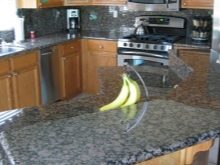
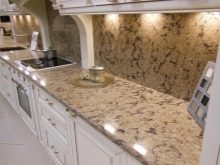
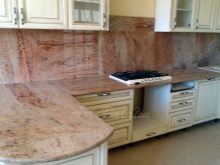
How to choose?
When choosing, you need to focus on a number of expert advice.
- It is necessary to check with the manufacturer what is the resistance of the stone to damage, humidity or temperature extremes. Natural stone countertops should not be stained by water.
- For the kitchen, you need to choose granite with a polished surface. In the absence of polishing, grease and dirt will accumulate in the pores of the stone. Then stains will remain on the working surface that are difficult to remove.
- The density of the stone must be high - this can be checked by pouring water or oil on a sample of the stone and leaving it for a few minutes. Then it is necessary to rinse off the liquid, wipe the surface, and assess if there are stains on the countertop. If there are no stains, then the stone is of the required density and is well suited for a kitchen set.
- Transportation and installation. It is better to involve specialists for the transportation and installation of the stone, since this requires special equipment.
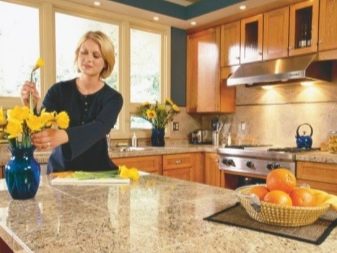
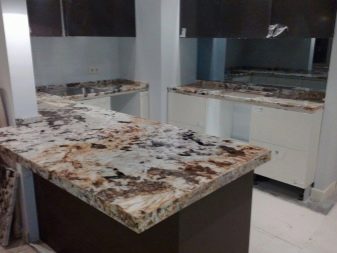
Marble surfaces
The marble worktop is well suited to both modern and classic kitchen interiors.
This stone goes well with various materials - wood, metal, ceramics and even plastic. Marble has a pattern that does not repeat itself. Therefore, each tabletop is unique in its own way.
Light marble is the most popular. It is a white, light blue or gray veined material. The natural grain pattern creates irregularities and thus blends with the straight lines of a modern interior.
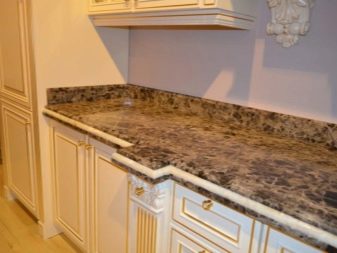
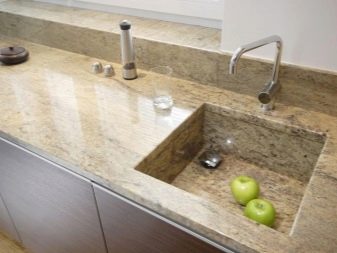
Marble countertops are installed in combination with cast faux stone sinks and aprons that are similar in shade.
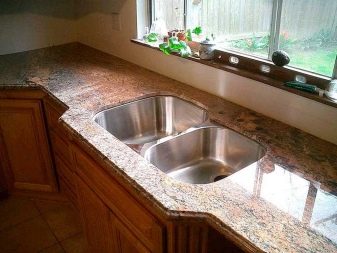
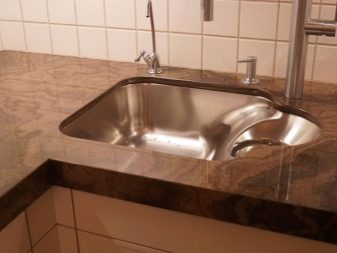
There are several types of marble countertops - glossy, matte or antique.
- Matt the stone has a silky texture and muted color. This stone is often used in country-style interiors. On the matte surface, scratches are hardly noticeable, but at the same time, such a treatment of the material makes the stone less resistant to pollution due to the porosity of the surface.
- Glosstends to be more expensive due to increased resistance to dirt and versatility. Such a stone will go well with almost any style of the room - from baroque to high-tech style.
- Antique surface the countertops have a leather-like texture. This treatment is used for dark stone. In addition, scratches, chips or fingerprints are hardly visible on the surface.


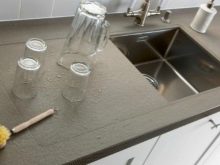
Subtleties of choice
The thickness of the marble slab should be about three centimeters. The edge of the surface can be different, but the most versatile and practical shape is rectangular.
If a large countertop is required, then it can be made by joining several slabs.
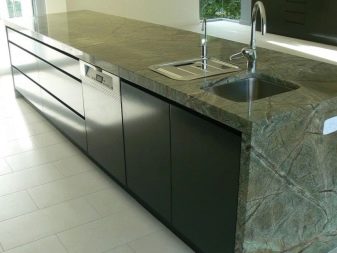
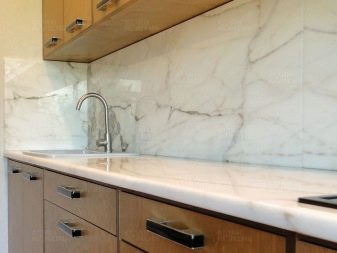
Advantages and disadvantages
Among the advantages of a marble surface are the following:
- the uniqueness of colors and patterns - the shades of the stone can be different and successfully emphasize the natural structure of the marble;
- environmental friendliness and hypoallergenicity - natural stone does not cause allergies and is safe;
- the stone is resistant to damage;
- marble is easy to process - you can update the appearance of the stone through regular polishing and grinding.
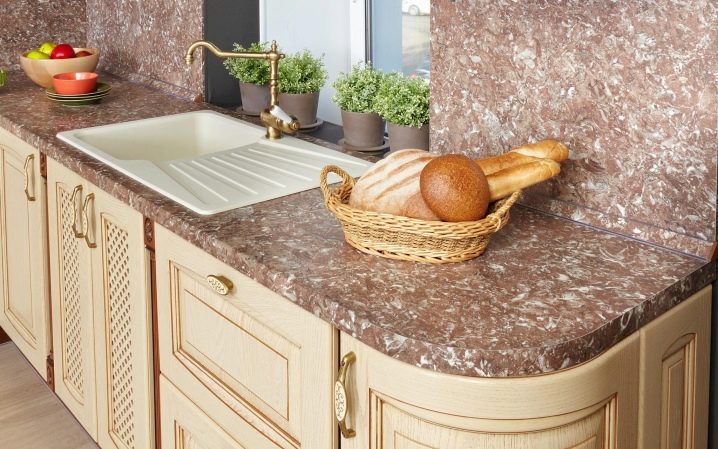
The disadvantages of marble countertops include:
- instability to temperatures - the stone is fragile, and when exposed to high temperatures, the surface may be damaged;
- porosity of the material - traces of products and liquids remain on the marble, it absorbs dirt well, because of this, the stone cannot be called durable.
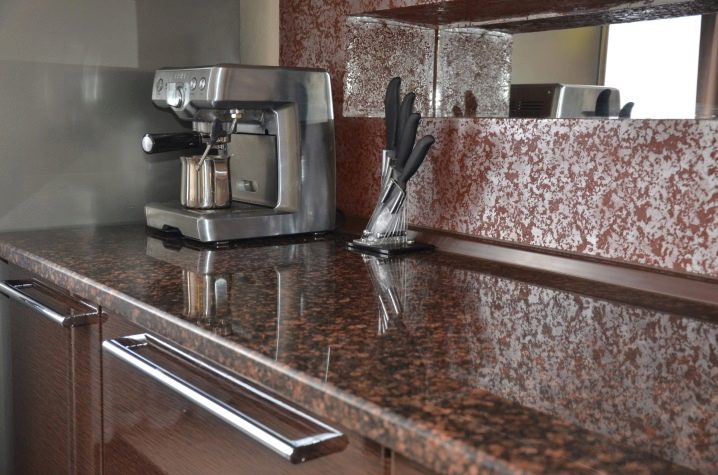
How to choose a natural stone countertop, see the video below.













I searched for information on marble countertops for a long time, rummaged through the entire Internet, until I came across this article from experts.
The comment was sent successfully.